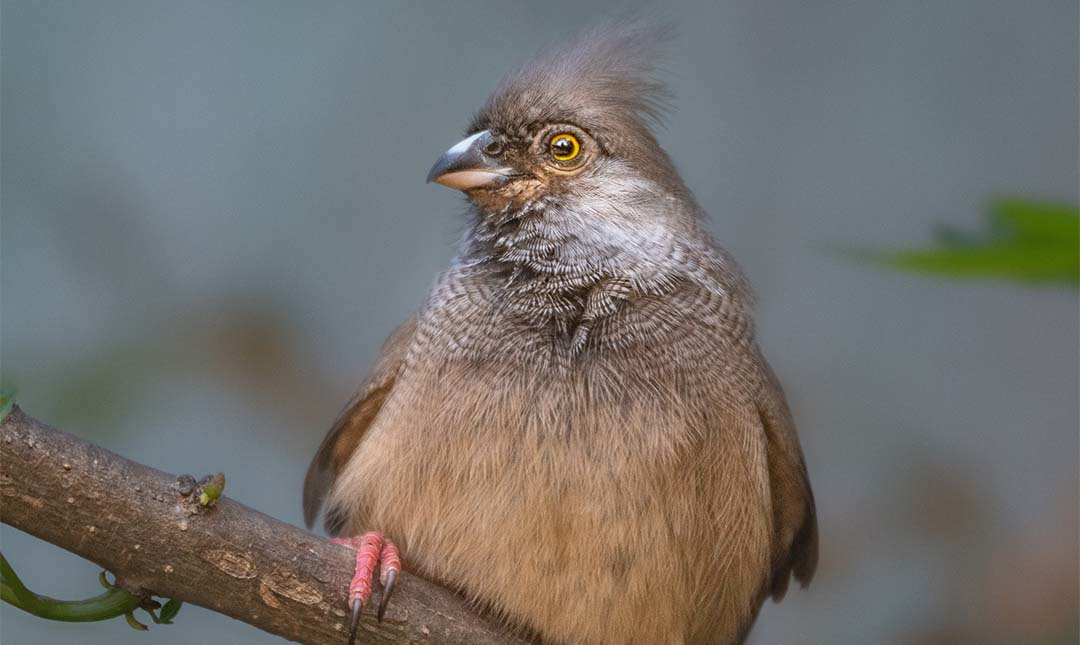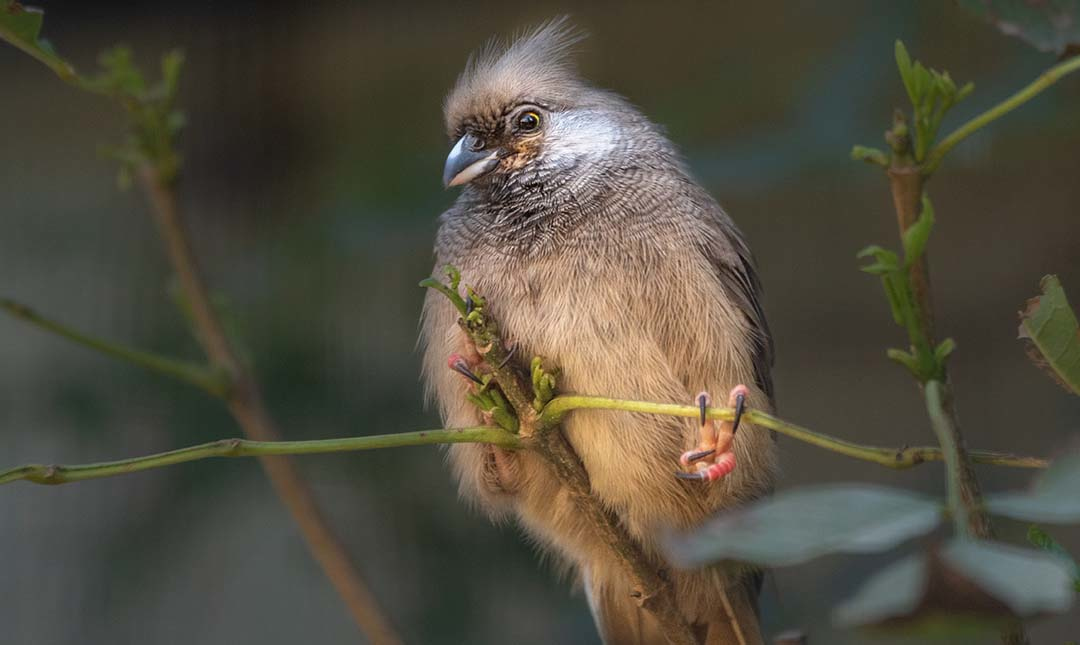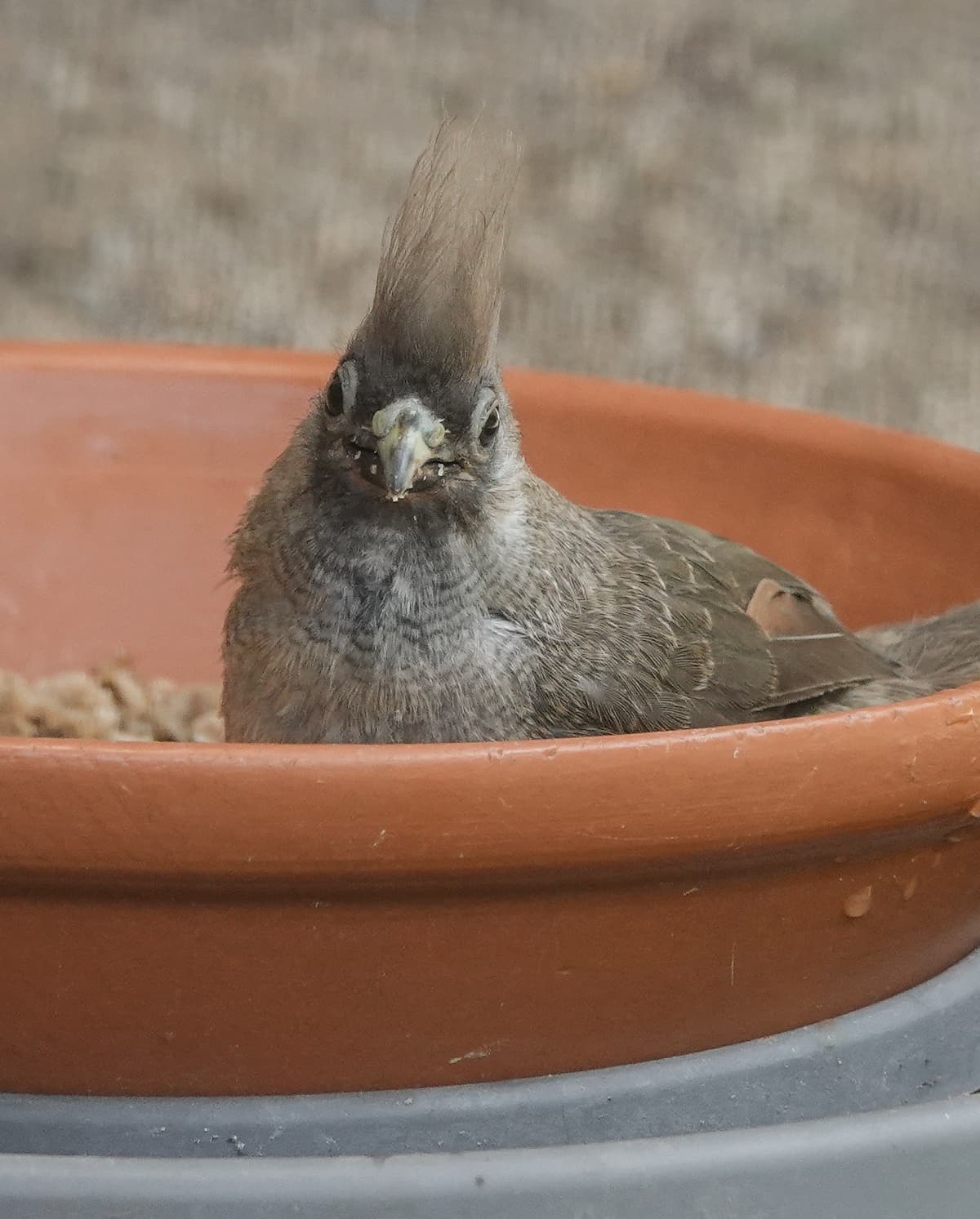About
Mousebirds are named for their gray color and mouse-like scurrying in the brush while hunting for food. Speckled mousebirds are the largest of the mousebird species. They have fluffy hair-like feathering, brown crests, and long tails that measure over half the size of their bodies.
Like mice, they are highly social and often seen in flocks of 15 to 20 birds. The flock depends on large, noisy numbers to deter predators, which include snakes, birds of prey, and mammals. To escape a predator, speckled mousebirds will fly into thick brush and freeze until the danger has passed. If necessary, they may drop to the ground like rocks and scurry away under the brush. Flocks also serve as lookouts when a bird descends to the ground for a dust bath. The dust absorbs excess oil from feathers and may also discourage parasites. Finally, these birds of a feather flock together for warmth, especially during cold and rainy nights. If necessary, they can go into torpor, slowing down their heart rate and metabolism to conserve energy. In the morning, they sunbathe and preen to raise their body temperatures. Because of their short, round wings, they do not fly gracefully and cannot fly far. Instead, they beat their wings rapidly and then glide short distances.
Mousebirds are quite agile in trees, climbing like parrots by using their beaks and claws. They have pamprodactyl feet, which means that the number two and three toes face forward, while the one and four toes can be held forward or backwards. This arrangement allows mousebirds to hang upside down to feed on fruit. They can also use their feet to hold food while eating. After eating, the birds may hang upside-down and expose the skin on their bellies to absorb heat and aid digestion.
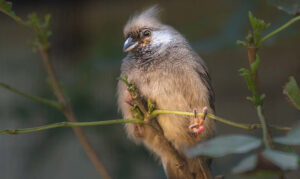
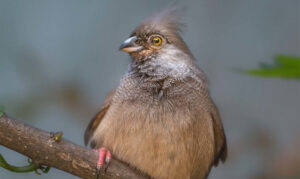
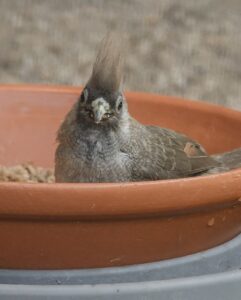
habitat
Speckled mousebirds live exclusively in the sub-Saharan areas of Africa. They normally inhabit dry brushland and woodland areas up to the edges of forests. They will not live in the rainforest. They have adapted well to urban areas where there are fewer predators and an abundance of food, especially around gardens and orchards.
diet
They feed primarily on up to 22 types of fruit, both ripe and unripe. However, they also consume berries, leaves, buds, seeds, and the nectar of various aloe plants. To add protein, they eat termites and ants.
physical characteristics
They are 12 to 14 inches long, with over half this length for their tails. They weigh less than two ounces. Lifespan is estimated at eight to ten years.
Location Within the Zoo
You’ll find this animal in the Animals of the Drylands section. See Zoo Map.

